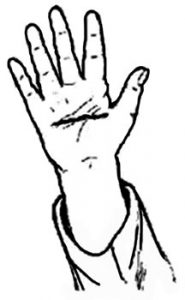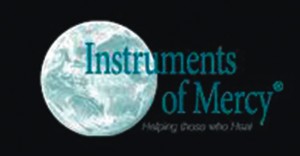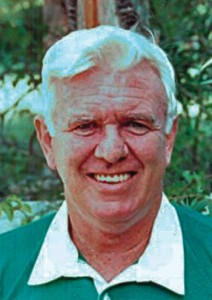Reflections on Marist Spirituality (7)
These reflections were first published in 2012 in Tutu - Another Way, written by Adele M.E..Jones with Michael McVerry sm.
They are printed with permission
Covenant
Now l would like to conclude with a note on covenant by Fr Craig Larkin.
‘We Marists have entered into a covenant agreement with Mary the Mother of God. The significance goes back to what a Covenant meant to the people of the Bible. The rite of making a covenant, or agreement, goes right back to the dawn of history. Most ancient civilisations had some form of covenant making. But for our purposes, we will look just at the Hebrew form of Covenant.
When two people wished to enter into a covenant, or life-long relationship of trust, friendship and solidarity, they went through very precise forms of ritual. First of all, one of the parties would take off his jacket, and give it to the other, who did likewise. The coat symbolised the person, and therefore the mutual giving of self, each to the other. To take the coat of the other symbolised taking the friend entirely. The two became friends.
The next step was the exchange of belts. The Hebrew belt was not used to support trousers, but to hang the sword or dagger. So to give one’s belt to someone was equivalent to saying: ‘Here is my strength, all my ability to fight, all my weapons are at your disposal. Anybody who touches you touches me also, we will fight back.’
Then an animal was taken, and cut in half, the two halves forming a sort of wall of blood. The two people then walked between the sections in a great figure eight, a walking through death, as if each were saying to the other: ‘I am dying even as this animal has died and all the rights I ever had to my life I give away to you. You can share it: it is your life.’ Then pointing to the animal they say, ‘If I break this covenant, may God do this and more to me, may God split me down the backbone.’
The final rite was the self-cutting and mingling of blood. The palms of the hand were cut, and each man placed his palm against the other’s. The blood mingled together and flowed down to the ground,where it fell on the soil — the ageless and eternal soil. ‘Our covenant joins us inseparably and forever.’And to witness to this, the two parties exchanged names, both placing the family name of the other before that of their own. For instance, if two men, Elias Friedman and Max Morris entered into covenant, they would be known in future as Elias Morris Friedman and Max Friedman Morris.
The seal of the covenant was the scar from a cut which had been made in the flesh.
Even today in some countries, a powder is rubbed into the wound of such a cut, so that the scar will show up darker than the natural flesh. The scar was carried with pride. But it was also a constant reminder of the person’s grace, responsibility, and a source of comfort. If any enemy approached and saw the scar of the covenant he would think twice before attacking because he was aware of the ‘blood brother’ who was represented by the scar, and who would give all his fighting ability and weaponry to defend his friend.
Maybe Fr Jean Claude Colin was not aware of all this when he spoke to Marists about their covenant relationship with Mary. But he did use words that strike very harmonious chords with what we understand of a covenant. He speaks of our mission being a ‘battle’, our journey being a march ‘with Mary at our head’ he speaks of the ‘sense of belonging’ to Mary, the confidence in ‘the name I bear’. I think Fr Colin was instinctively aware that the relationship of Marists to Mary is a covenant relationship.
The very distinct message the first Marists heard from Mary was: ‘It is my wish and the wish of my Son, that there be another Society to battle with hell, one consecrated to me, one which will have my name, which will call itself the Society of Mary, whose members will call themselves Marists.’
 If Mary has given us her name it also means that everything implied by a covenant belongs to us as well. I think that Fr Colin understood this instinctively. On one occasion he said: ‘Gentlemen, what have we to fear? The blessed virgin is leading us. She is saying to us, ‘I am marching at your head’. Gentlemen, given that thought — the Blessed Virgin is marching with me — who would not feel full of confidence and courage in any trial. And then, if I reflect on the name I have, what a source of hope, or reassurance! But the name is no longer enough for I profess to belong to Mary, and I want to profess my belonging to her even more. I want my devotion to her to redouble, that my dependence on her be total and continual. I shall always hold her by the hand. In my troubles, in my difficulties, I shall say to her, ‘Blessed Virgin, help me, I falter. I cast myself onto your merciful lap, help me to pick myself up again.’
If Mary has given us her name it also means that everything implied by a covenant belongs to us as well. I think that Fr Colin understood this instinctively. On one occasion he said: ‘Gentlemen, what have we to fear? The blessed virgin is leading us. She is saying to us, ‘I am marching at your head’. Gentlemen, given that thought — the Blessed Virgin is marching with me — who would not feel full of confidence and courage in any trial. And then, if I reflect on the name I have, what a source of hope, or reassurance! But the name is no longer enough for I profess to belong to Mary, and I want to profess my belonging to her even more. I want my devotion to her to redouble, that my dependence on her be total and continual. I shall always hold her by the hand. In my troubles, in my difficulties, I shall say to her, ‘Blessed Virgin, help me, I falter. I cast myself onto your merciful lap, help me to pick myself up again.’
The great source of confidence for anyone who had entered into a covenant relationship in the Old Testament was the realisation that a person did not stand on his own. He had with him the strength not only of the other person, but of all the tribe, to which that person belonged.
‘What have we to fear?’ says Fr Colin. ‘The Blessed Virgin is leading us and if I reflect on the name I bear, what a source of hope, of reassurance!’ We have exchanged names with Mary; she has given us hers, and our name is permanently on her heart. And in the struggles that we experience day by day, it is not only her, but her family — the Holy Family and the Communion of Saints — that marches with us. We have only to call out and the whole army is there — and has to be through the terms of the covenant.
But there is another side to it. Fr Colin says, ‘The name is not enough. I want to profess my belonging to her even more.’ I think if Fr Colin were speaking today, in the words of this ‘Covenant language’ he would see the ‘Spirit’ of Mary as the scar on our foreheads to let people know whose family we belong to. In Old Testament times, when an enemy saw the mark on the forehead, he knew whom he was taking on. What is the ‘mark’ that people can see on Marists that makes them realise they belong to Mary’s tribe? l think Fr Colin used all sorts of words and phrases to describe that scar: ‘simplicity’ was one. Modesty, poverty, opposition to greed, to pride, and to power, were others. Then he spoke of being ‘instruments of mercy’ and people who support the local Church.‘
We are to be like Mary. That is why we are Marists, people in covenant with Mary and her Son.‘Marist’ has the first three letters of Mary’s name and the last three letters of Christ’s. We start with Mary and end with Christ. We are in a covenant relationship with Mary, the Mother of Christ.
To sum all this up, I quote Fr Coste: ‘If we want a unifying principle of our Marist Spirit, we could find it only in fidelity to the Holy Spirit. He it was who guided Mary and fashioned her soul. It was he who inspired and helped Fr Colin to understand the mystery of Mary. It is he, acting within the society, who sees to it that Marists of today learn how to walk in the footsteps Mary.’

 Entries(RSS)
Entries(RSS)